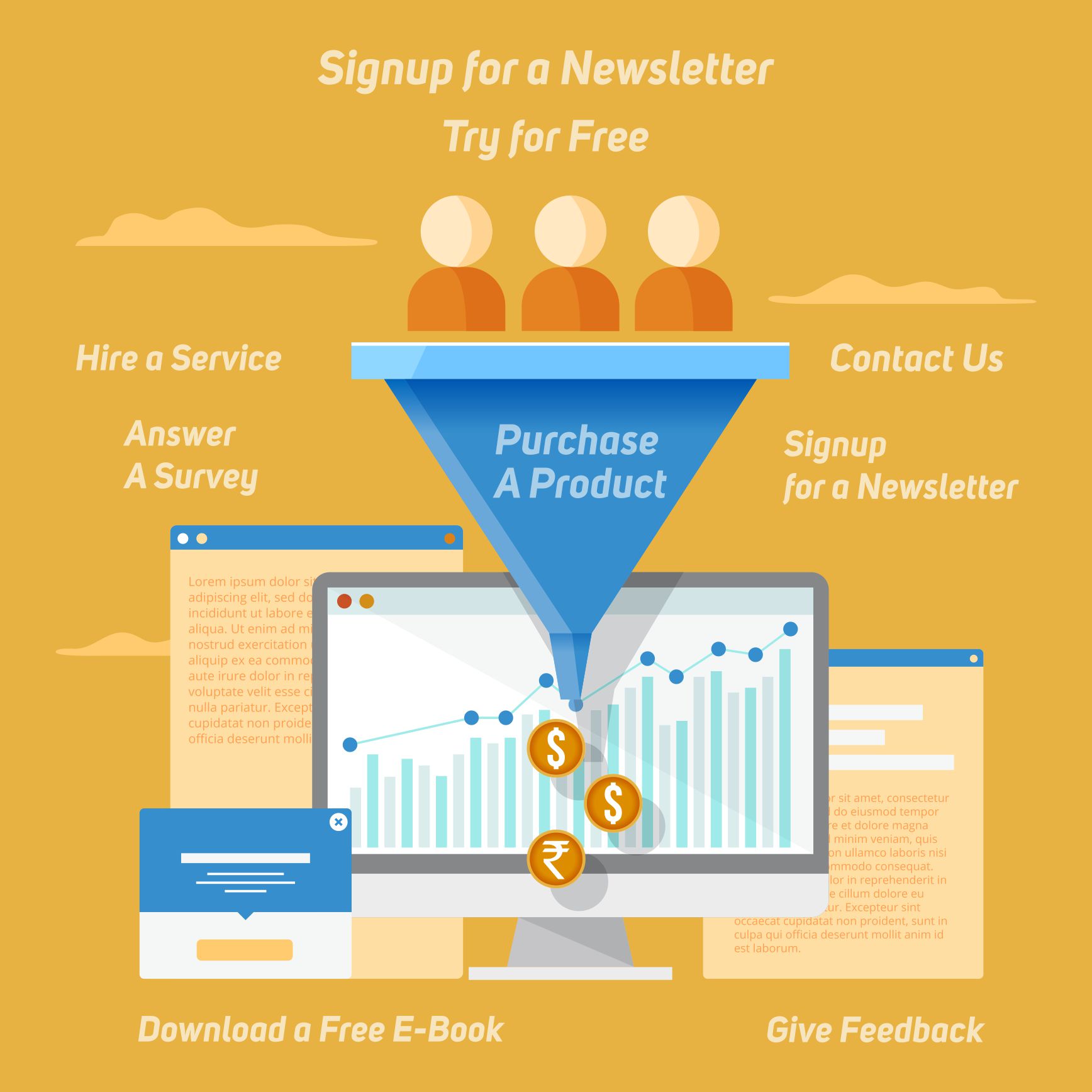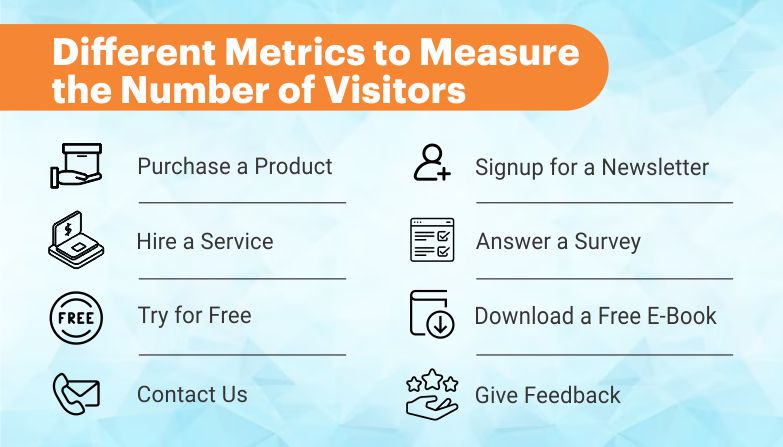Synopsis:
Mastering Conversion Rate Optimization (CRO) is essential for the long-term growth of your eCommerce business. These strategies equip your business with the correct tools to improve conversion rates and maximize revenue.
Additionally, the CRO also improves the performance of your eCommerce website to attract more customers. This guide will list the reasons for low conversion rates, metrics to measure the number of visitors, and how to improve conversion rate optimization.

The most challenging part for an online business is to convert visitors into paying customers. Low conversion rates can be attributed to numerous factors like poor website design, unclear CTA (Call to Action), inefficient checkout process, unoptimized pages, etc.
Therefore, identifying and understanding these challenges is the primary objective of any business for long-term sustainable growth. Conversion Rate Optimization (CRO) offers a systematic approach to improve website performance and increase conversion rates.
Analyzing user behavior, optimizing key elements, and conducting A/B testing can help you improve your website performance and maximize revenue generation.
This guide aims to provide a comprehensive understanding of Conversion Rate Optimization (CRO) strategies. It will equip your business with the tools and insights to overcome conversion obstacles. The guide will serve as a roadmap for optimizing conversion rates and staying ahead in the digital landscape.
What is Conversion Rate Optimization (CRO)?
Conversion Rate is the percentage of users who visit a website and complete a desired action during a specific period. These actions include purchasing, signing up for a newsletter, or filling out a contact form.
CRO includes analyzing data, understanding user behavior, and making precise changes to a website’s design, content, and functionality to encourage more conversions. Conversion Rate Optimization (CRO) goal is to maximize the effectiveness of a website in achieving its objectives, whether they relate to sales or conversions.
By optimizing various elements of a website, such as layout, navigation, messaging, and call-to-action, you can increase your conversion rates and drive more revenue and growth. Besides, CRO (Conversion Rate Optimization) is an ongoing process that requires continuous testing, refinement, and adaptation based on user feedback and data analysis.
CRO optimization includes techniques such as A/B testing, user experience (UX) design, and data analytics to identify and address barriers to conversion and improve overall performance.
However, remember that every page has a primary goal, and any valuable engagement your visitors make may count as a desired action if it fulfills your webpage’s goal.

Different Metrics to Measure the Number of Visitors
- » Purchase a Product – Action buttons like buy now or add to cart are the best examples of these queries.
- » Signup for a Newsletter – This form can have multiple variants depending on your business UI/UX, but it should have a CTA button with a field to enter your email address.
- » Hire a Service – This CTA action promotes a service like hiring an eCommerce development company, Increasing your revenue, etc.
- » Download a Free E-Book – This CTA allows users to download an e-book that portrays their interest.
- » Try for Free – This CTA allows users to demo a product before buying it.
- » Contact Us – It allows the users to contact the eCommerce support team.
- » Answer a Survey – This call-to-action helps collect valuable insights about a user.
- » Give Feedback – It compels users to share their views or feedback.
Reasons for Low Conversion Rates
Driving higher conversion rates is crucial for your business growth. However, many businesses struggle to optimize their website effectively, causing them to lose business. Therefore, we have explored six common reasons why your eCommerce website has a low conversion rate and discuss strategies for addressing these challenges of conversion rate optimization (CRO).
1. Slow Website
The first challenge to conversion rate optimization is a slow-loading website that can impact your conversion rates. In today’s world, users expect an instant response and have little patience for slow websites. Research shows that even a one-second delay in page load time can result in a drop in conversion rates.
To overcome this issue, you need to invest in optimizing the website’s speed by minimizing HTTP requests, optimizing images, and using browser caching.
2. Poor User Experience
A smooth and interactive user experience is crucial for driving conversions. If users encounter difficulties navigating a website or accessing desired information, they are likely to abandon their session without completing a purchase.
You must prioritize user experience by implementing simple navigation, intuitive design, and responsive layouts. Also, you can conduct usability testing and gather user feedback to help identify and address the problems.
3. Bad First Impression
First impression matters, especially in the digital market. If a website fails to make a positive impression within the first few seconds of a user’s visit, they are unlikely to engage further or convert.
Factors like outdated design, cluttered layouts, and irrelevant content can contribute to a poor first impression. Hence, to make a lasting impact, you must create visually appealing and professional-looking websites that effectively communicate your brand identity and value proposition.
4. Not Optimizing for Mobile
Nowadays, the most important factor for conversion rate optimization is mobile-friendliness. Mobile optimization is no longer optional – it is essential. A sizable portion of website traffic comes from mobile devices, and failure to optimize for mobile can result in missed conversion opportunities.
Now, you must ensure that your eCommerce website is responsive and mobile-friendly, with fast load times and easy navigation on smaller screens. Mobile optimization significantly improves the user experience and drives conversions from mobile users.
5. Complicated Navigation
Another reason for low conversion is complex and confusing navigation. It can frustrate users and deter them from completing desired actions. You should strive for simplicity and clarity in website navigation and make it easy and quick for users to find what they want, which is crucial for conversion rate optimization.
Clear labeling, logical hierarchy, and intuitive navigation menus can help smoothen the user experience and guide visitors toward conversion points. Conducting usability testing and analyzing user behavior can provide valuable insights into navigation issues and opportunities for improvement.
6. Ineffective targeting
Low conversion rates can also be because of targeting the wrong audience. You should carefully define your target audience and tailor the marketing efforts to reach and engage with this audience effectively.
Personalization tactics, such as audience segmentation based on demographics, interests, and behavior, can help you deliver more relevant messages. When you target an accurate audience, the chances of conversion increase.
How to Perform Conversion Rate Optimization (CRO)?
Conversion Rate Optimization (CRO) is a vital process for your eCommerce business to maximize the website's effectiveness to drive conversions. Systematically analyzing user behavior, identifying barriers to conversion, and implementing data-driven optimizations can enhance their conversion rates and increase revenue. Now, let’s learn how to perform conversion rate optimization.
Step 1: Identify Necessary Conversions
The first step in conversion rate optimization is to pin out the primary actions or conversions that are critical to your business objectives. These conversions could include purchasing, signing up for a newsletter, filling out a contact form, or any other desired action.
By defining your goals upfront, you can focus your optimization efforts on driving these actions.
Step 2: Analyze Your Conversion Funnel
After identifying the conversion goals, it is necessary to analyze your conversion funnel to understand the user journey from initial interaction to conversion. Funnel analysis involves tracking user behavior at every stage of the conversion process.
Additionally, identifying factors that may be causing visitors to leave before completing the desired action. Some common barriers that hinder conversion include slow page load times, confusing navigation, and friction in the checkout process.
Step 3: Collecting User Data
To better understand user behavior and preferences, you must dig deeper and collect as much data as possible about your website visitors. This data can include demographic information, browsing behavior, past purchase history, and more.
Tools such as Google Analytics, heatmaps, and user surveys can help you collect valuable user insights that can aid the optimization efforts. By understanding your user’s drivers, barriers, and hooks, you can build your website to meet their needs and preferences.
Step 4: Creating Strategy
Based on the insights collected from user data and funnel analysis, you can formulate a strategy for improving your conversion rates. This strategy should be based on data-driven insights and propose specific changes or optimizations to your website’s funnel features.
For instance, if you notice a high drop-off rate on the product page, you need to strategize to add customer reviews and ratings, feedback, product images, etc., to boost user’s trust in your website to increase conversions.
Step 5: A/B Testing
After deciding on a strategy, you need to put them to the test through A/B Testing. It is a usual method for testing strategies, where you create two or more variants of a web page with different elements and measure their impact on conversion rates.
For instance, you might create two versions of the product page – one with reviews and ratings and one without. Once done, you need to collect data for several days to check out the collected data. These insights will help you understand which one is performing better. It will help you identify the most effective strategies for improving the conversion rate.
Step 6: Review Performance
Conversion Rate Optimization (CRO) is an ongoing process that requires continuous monitoring, review, and iteration. After implementing the strategy and conducting the A/B test, you need to analyze the results and determine the impact on your conversion rate.
If a test produces positive results, you can implement the winning variant permanently. If the test turns out negative, you need to reevaluate your strategy and use the things you learned for future endeavors.
You can gradually improve your conversion rates over time by continuously reviewing and iterating your optimization strategies. It will further help you in attaining sustainable business growth.



